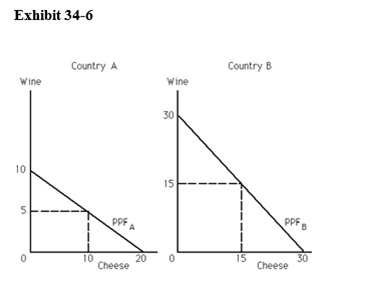Assignment:
Question 1
If Shawn can produce donuts at a lower opportunity cost than Sue, then
A. Shawn has a comparative advantage in the production of donuts.
B. Sue has a comparative advantage in the production of donuts.
C. Shawn should not produce donuts.
Question 2
When each person specializes in producing the good in which he or she has a comparative advantage, total production in the economy
A. falls.
B. stays the same.
C. rises.
Question 3
Both Dave and Caroline produce sweaters and socks. If Dave’s opportunity cost of 1 sweater is 3 socks and Caroline’s opportunity cost of 1 sweater is 5 socks, then
A. Dave has a comparative advantage in the production of sweaters.
B. Caroline has a comparative advantage in the production of sweaters.
C. Dave has a comparative advantage in the production of socks.
D. Dave has a comparative advantage in the production of both sweaters and socks.
Question 4
Assume that Jamaica and Norway can switch between producing coolers and producing radios at a constant rate. The following table shows the number of coolers or number of radios each country can produce in one day.
----------- One day output
----------- Coolers | Radios
--------------------------------
Jamaica | 12 '''''' | 6
Norway | 24 ''''' | 3
Complete the sentence: Jamaica has a comparative advantage in the production of
A. coolers and Norway has a comparative advantage in the production of radios.
B. radios and Norway has a comparative advantage in the production of coolers.
C. both goods and Norway has a comparative advantage in the production of neither good.
D. neither good and Norway has a comparative advantage in the production of both goods.
Question 5
By definition, imports are
A. people who work in foreign countries.
B. goods in which a country has an absolute advantage.
C. limits placed on the quantity of goods leaving a country.
D. goods produced abroad and sold domestically.
Question 6
A tariff is a tax on
A. savings.
B. capital goods.
C. imports.
D. land.
Question 7
Refer to Exhibit 34-6. Which of the following is true?

A. Country A has a comparative advantage in both cheese and wine.
B. Country B has a comparative advantage in both cheese and wine.
C. Country A has a comparative advantage in cheese, and country B has a comparative advantage in wine.
D. Country B has a comparative advantage in cheese, and country A has a comparative advantage in wine.
Question 8
Over a given period of time, if imports are greater than exports, the result is
A. A trade war.
B. A trade deficit.
C. An embargo.
D. A trade surplus.